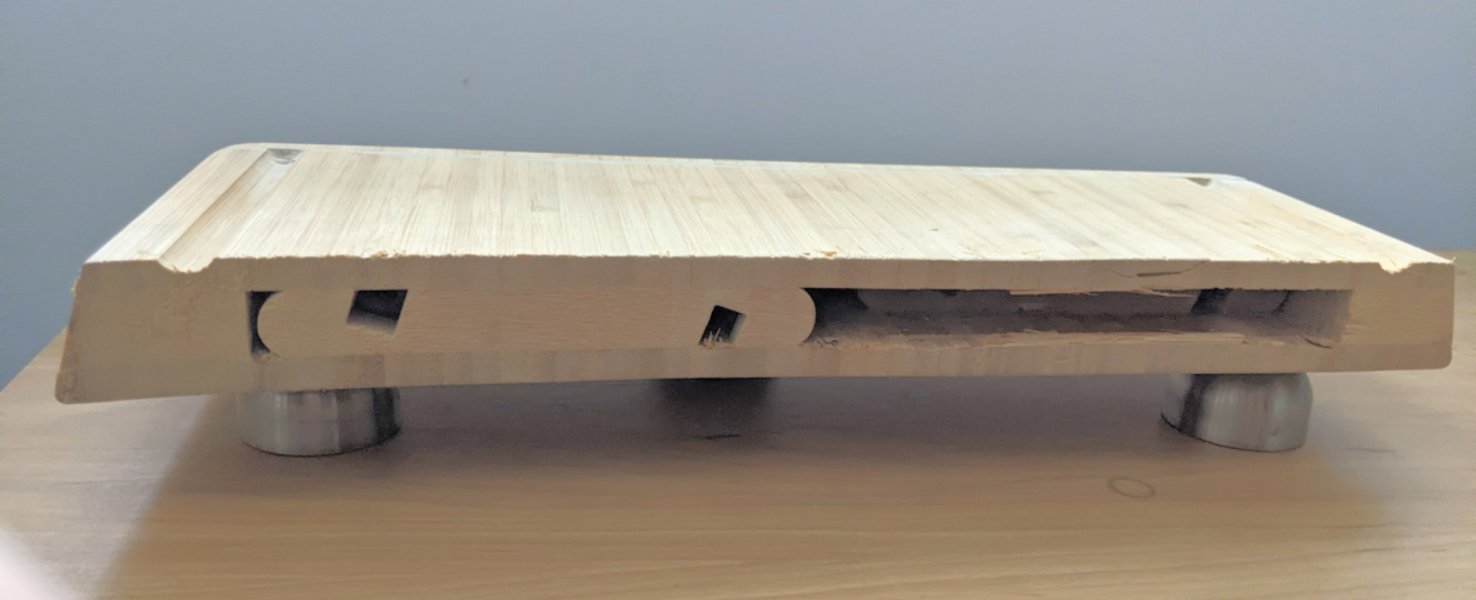Well of course a $21.99 cutting board is not the best choice for audio. The audiophiles who have actually tried them though, tend to come away with the impression that they deliver one heck of a bang for the buck.While I haven't conducted any formal testing, I suspect that acoustically, these hollow boards might not be the best choice.
I had been so impressed with what I heard from the various bamboo cutting boards, that a few years back I purchased a Quadraspire rack with bamboo shelves. I was left with a pile of cutting boards that were leftover after that.
That Typhon sitting on the floor was not a component I was planning to purchase. I got incredibly lucky in that a member here offered it at a price I could not refuse. The APTITLIG cutting board underneath it was just a stopgap as I didn’t want to place the Typhon directly on the carpet. I couldn’t be happier with the bang for the buck I got from the Typhon sitting on that $21.99 cutting board.













